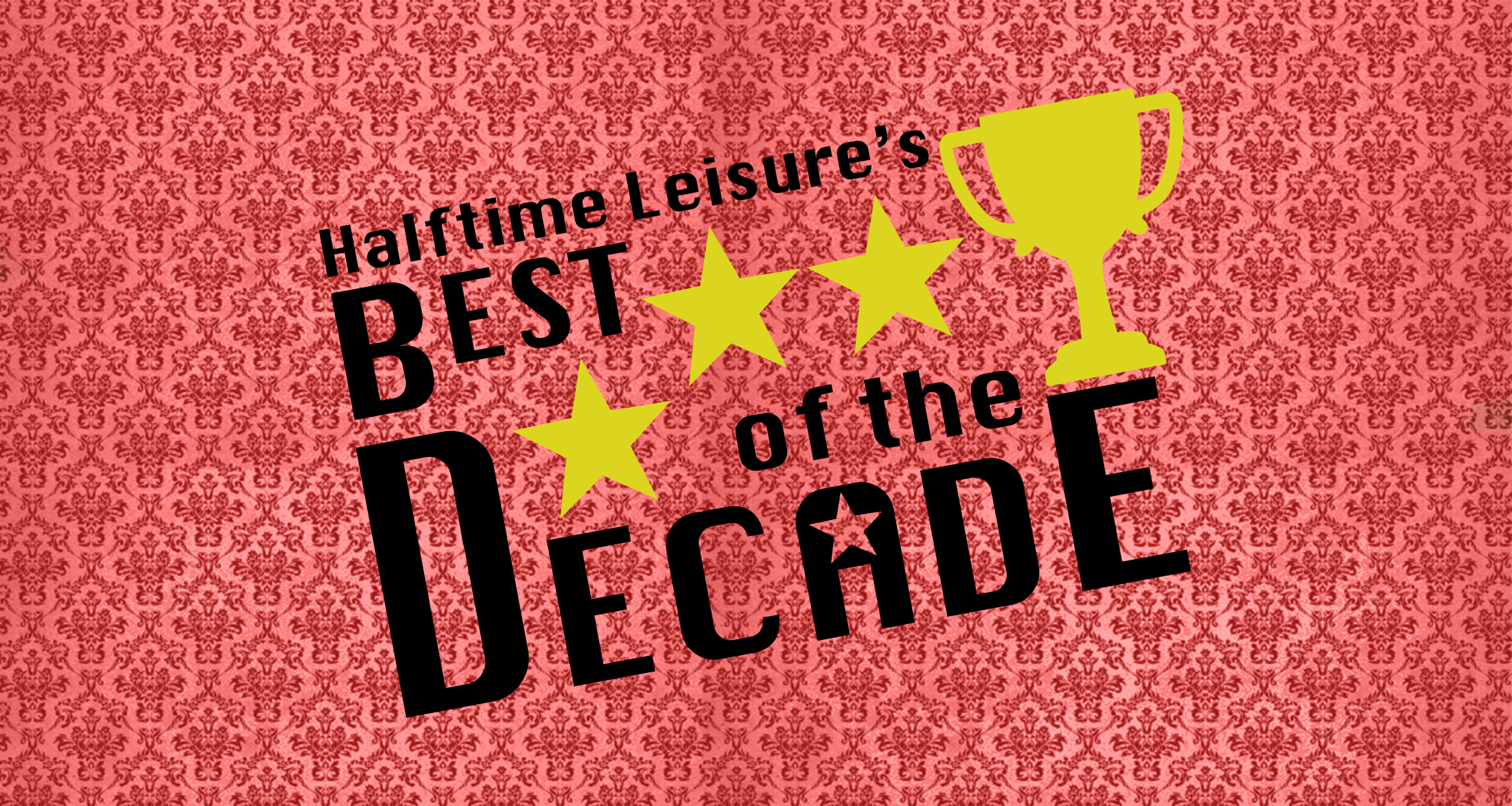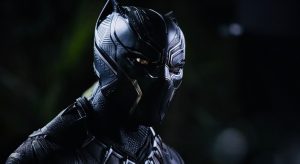As the decade comes to a close, Halftime is celebrating by taking a look back at the best that the 2010s had to offer. Below you’ll find some of our favorite films from the past ten years. Be sure to also check out Halftime’s Best Albums and Best TV of the Decade.
***
Summarizing an entire decade’s worth of movies is hard. Literally thousands of films have been released over the past ten years, many of which were excellent enough to warrant a mention in a “Best of the Decade” list. So instead of arbitrarily picking which movies were “The Best” or “The Most Influential”, we’ve decided to look at a handful of trends, patterns, and developments that happened in the cinematic world of the 2010s. Enjoy.
Rise of the Superhero Movie
Of the many blockbuster movies to come out of the 2010s, superhero films have been the dominant trend of the decade. The Marvel Cinematic Universe opened the decade strong with Iron Man 2 (2010), Thor (2011), and Captain America: The First Avenger (2011), introducing and developing beloved comic book characters to the 21st century big-screen. With the introduction of the record-breaking The Avengers (2012), however, the possibility of a superhero film becoming a smashing commercial hit became a reality. The Avengers was not only a good superhero movie, it was a good movie in general, with the ability to attract a huge audience beyond established comic book fans. It had excellent special effects and witty writing by Joss Whedon. Gone are the days of Tobey Maguire dancing awkwardly on the streets of New York in the awful Spider-Man 3 (2007).
The Avengers effectively raised the bar for superhero movies and instigated the release of several other high-quality films since—Black Panther (2018), Wonder Woman (2017), and Logan (2017) to name a few. The themes, tones, and direction of these movies vary greatly, exemplifying the dynamic nature that superhero films now possess. Black Panther and Spider-man: Into the Spiderverse (2018) even broke into the awards circuit to snag a total of four Oscars, including Best Animated Feature. This high standard and commercial success has provided audiences with fun, entertaining, and occasionally insightful films that companies have attempted to replicate time and again—sometimes to no avail. I’m looking at you, Aquaman (2018). With the promise of Marvel’s Phase Four on the horizon and the public’s obsession with all things super, it’s safe to say this trend will continue into the next decade.
Disney Hegemon
It’s no secret that Disney owns all of our souls. The company that once focused almost solely on 2D animation now has a hegemony over two of the largest franchises in entertainment (Marvel and Star Wars), as well as the streaming service, Hulu, and Fox’s film studios. Not to mention it purchased Pixar Animation Studios in 2006. Unfortunately, approaching monopoly status has led to a decade of increasingly weak and uninspired attempts to make the company even more money. Namely, I’m referring to the ever-growing trend of live action remakes and sequels. Of the few original animated films to be produced by Disney this decade, the outcomes have been at least solid, and at most quite enjoyable. Films like Coco (2017), Moana (2016), and Inside Out (2015) all possessed imaginative premises, dynamic characters, and some beautiful animation. Why, then, does Disney feel the need to churn out sequel after terrible sequel? Why must it take its own golden-age content and remake it with overdone CGI and lifeless anthropomorphs? The simple and disappointing answer is money. Disney is no longer interested in making new, unique, and creative content. They, like any other massive corporation, have stooped to the level of money-grubbing—and in entertainment, that often results in bad and uninspired content. I hope that this new decade brings fresh ideas and a renewed moral code to Disney, because they truly do own us all.
Netflix
If there is one trend that has changed how we watch movies and television in the 2010s, it has to be the rise of the online streaming service. The modern version of Netflix launched in 2007 and by this decade it had introduced an entirely new way to watch film. Content was available with the click of a button—no movie theater, library, or rental store (RIP Blockbuster) necessary. Furthermore, you could watch your favorite shows and movies anywhere you wanted, as long as you had a phone or computer. Fast forward seven years and Netflix has been joined by Amazon Prime, Hulu, Disney+, Shudder, Apple TV+, CBS All Access, and more. The road to quality and mainstream acceptance for the films produced by these streaming services has been a bit bumpier. Both awards shows and festivals have been wary about recognizing Netflix films due to accusations that streaming services undercut the theatrical experience and hurt the traditional film industry.
For the most part, this has been justified, as most of the original movies produced by streaming services have only been passable at best, but there are a few that have stood out from the usual dregs. Okja (2017) and The Ballad of Buster Scruggs (2018) were both a treat to watch while Netflix’s first film, Beasts of No Nation (2015), and Mudbound (2017) both almost won Oscars. Add in Amazon Prime’s The Big Sick (2017) and Suspiria (2018) and there’s a solid argument that streaming services can make great films. The movie that proved it, however, was Roma (2018). Director, screenwriter and cinematographer Alfonso Cuaron channeled his childhood memories into a story that captures both the internal drama of its characters and the all-encompassing drama of the world around them. Roma is both personal and universal, banal and profound, intimate and epic. Plus, it could only come from Netflix. Because of Netflix, a black and white foreign language film with no recognizable stars was fully funded, distributed to millions of viewers, and given international attention. Roma was nominated for seven Oscars and won three, well deserved recognition for both the incredible quality of the film and the potential for streaming services to generate great cinema.
Black Filmmakers
It’s no secret that Hollywood has a race problem, both in front of and behind the camera. People of color have a significantly harder time telling stories about themselves than their white counterparts and it shows in the lack of diversity of films that audiences get to see. This has not changed during the 2010s, with the #OscarsSoWhite controversy proving just how few opportunities there are for people of color and how little recognition they get. However, there are signs that things may be changing. Throughout the decade, black filmmakers made excellent films like 12 Years a Slave (2013), Selma (2014), Straight Outta Compton (2015), and Moonlight (2016). Then 2018 happened, and blew everyone’s minds. Seriously, Black Panther, BlacKkKlansman, Widows, Sorry to Bother You, If Beale Street Could Talk, Blindspotting, and The Hate U Give were all released in one year. Mainstay directors like Spike Lee (who finally won his first Oscar), Ryan Coogler, and Steve McQueen continued to make great films while new talents Boots Riley and Daveed Diggs created movies so weird and wonderful that they demanded to be watched. There’s still a long way to go before things are equal for black filmmakers, as evidenced by the stupid, regressive Green Book that won best picture, but 2018 represented hope that things are moving in the right direction.
The best movie by a black filmmaker in the 2010s didn’t come out in 2018, however—it came out the year before. Simultaneously one of the best horror movies, best comedies, best thrillers, and best directorial debuts of the decade, Get Out (2017) used its mix of genres to cleverly convey its message about black identity in the 21st century. Writer and director Jordan Peele crafted a deep film rich in symbolism and meaning that’s still an exciting thrillride to watch. Get Out was a change of pace in so many ways. It skewered allegedly woke liberals, exposing their latent racism instead of going after the traditional right wing villains. It mixed horror and comedy in a way that highlighted both elements without undercutting either. It made TSA agents look kind of cool. It’s a film that broke rules, made points, and got results and it’s a testament to what happens when you let diverse voices tell the stories that they want to tell.
Sci Fi
To say that the 2010s was a phenomenal decade for sci-fi would be an understatement of truly epic proportions. Seriously, you could make a “Top 10 Films of the Decade” list and every single movie you picked could easily be sci-fi. It seemed like every year another science fiction film shot for the moon and stuck the landing. During this decade, filmmakers took audiences to space with Gravity (2013) and The Martian (2015), bent time (and our minds) in Inception (2010) and Interstellar (2014), and redefined how man relates to machine in Her (2013) and Blade Runner 2049 (2017). There was even a movie entirely about how we would understand alien language in Arrival (2016). Each and every one of these movies is a masterpiece, arguably the best film this decade had to offer. But even disregarding these towering achievements, there was still a variety of excellent sci-fi to choose from. Films like Looper (2012), Snowpiercer (2013), Under the Skin (2013), Upstream Color (2013), Dawn of the Planet of the Apes (2014), Annihilation (2018), Sorry to Bother You (2018), Upgrade (2018) and Ad Astra (2019) were all incredible to watch. Even the blockbusters from the Marvel and Star Wars franchises left their mark on the genre. Overall, it was a decade that showed the extents of what science fiction could do, introducing new ideas and new stories to audiences in beautiful cinematic packages.
Action
Throughout the 2010s, two things became very clear when it came to action: long, steady-cam takes make action look good, and the action feels more intense if the actors do their own stunts. The balletic gunfights of the John Wick franchise are largely responsible for the resurgence of smoothly shot action, while the Mission Impossible franchise continually upped the ante throughout the decade by letting Tom Cruise do all his own stunts. As these two big franchises changed how action movies were made, smaller films quickly adopted the new techniques. Upgrade (2018) used a stiff, mechanical camera to match its protagonist’s robotic movements to hilarious effect. Atomic Blonde (2017) wasn’t a great movie overall, but its nearly 10-minute-long stairway fight is one of the best action sequences in film history. The action scenes in Skyfall (2012) were gorgeously artistic, while the fights in The Raid: Redemption (2011) and The Raid 2 (2014) were among the most brutal ever put on film.
All of these characteristics appeared in this decade’s best action film, which combined practical effects, smooth camerawork, brutal choreography, beautiful cinematography, great acting, and a deceptively deep story into a glorious symphony of cinematic destruction. Mad Max: Fury Road (2015) grabs you from its opening scene and won’t let you go until its last. The story of Imperator Furiosa (Charlize Theron) rebelling against her brutal patriarchal overlord to liberate his harem of sex slaves is no less effecting for how simply it is told. The action is incredibly intense, flowing in, around, and between crazy battle cars as they race across a beautifully austere post-apocalyptic wasteland. Impressively, this is almost entirely done with practical effects. Every crash, every explosion, every pole vault between moving vehicles, and every heavy metal flamethrower guitar were real props and real stunts performed by real people. All told, its a level of commitment that makes Mad Max: Fury Road the pinnacle of action excellence.
So those are our thoughts on a few movie trends from the 2010s. It’s a bit reductive, skipping over how everyone tried cinematic universes, everything from the ‘80s got remade, horror got psychological, animation got weird, and comedy got both meta and female, but it’s what we could do without writing a brain-breaking 600-page-long book. Since its not really fair to title an article “Best Films of the Decade” and not give at least a few recommendations, we’re each including a brief list of our personal favorites at the end. Overall, it’s been a great decade for movies, and we can’t wait to watch more in the next ten years!
Steven’s Recommendations: Only Lovers Left Alive (2013), Whiplash (2014), Ex Machina (2015), The Red Turtle (2016), Burning (2018), Tigers are Not Afraid (2019)
Lucy’s Recommendations: From Up on Poppy Hill (2011), Scott Pilgrim vs. the World (2010), Hunt for the Wilderpeople (2016), Dunkirk (2017), The Grand Budapest Hotel (2014)
Click here for more Best of the Decade content!





